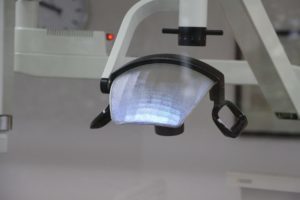Dental Business Coach
 Words have a powerful effect on perception. Are you selling yourself short when it comes to describing your practice or your services? Patients visit you because they trust you to be open, honest, and experienced in communicating the condition of their oral health in a way they will understand. To accomplish this effectively, you need to be mindful of your word choice.
Words have a powerful effect on perception. Are you selling yourself short when it comes to describing your practice or your services? Patients visit you because they trust you to be open, honest, and experienced in communicating the condition of their oral health in a way they will understand. To accomplish this effectively, you need to be mindful of your word choice.
“Check Up” or “Comprehensive Examination”
A “check up” sounds menial and unimportant. You might say you take your car in for a “check up” or “tune up.” Oral health care is diminished when it is referred in this way. Use the more professional sounding “comprehensive examination.” This emphasizes the fact that you and your team are doing a lot more than just checking the mouth and teeth. You are looking for signs of decay and oral cancer, providing a thorough cleaning, and offering recommendations for additional treatments. That’s a lot more than a “check up.”
“Just a…”
Don’t use this phrase when leading into a diagnosis. “Just a cavity,” or “just a little inflammation,” minimizes the importance for action. Your patient might heed this as permission to wait on further treatment. The public is often not aware of the importance of their oral health and how oral diseases can spread, worsen, and lead to other painful and costly problems. Be clear with patients when making a diagnosis, but never make it sound unimportant or that it can wait.
“Bleaching” is Not Synonymous with “Whitening”
When describing whitening treatments to patients, it may sound like a natural choice to use the word “bleaching.” Avoid using this term. To some patients, this may imply bleach is used in the whitening process. It also sounds far more painful than “whitening.” Using the term “Bleaching” sounds dangerous, or that it involves the use of harsh chemicals. “Whitening” is an ideal term to use as it also serves as a description for what patients can expect after treatment – a whiter smile.
Word choice matters. Patients are relying on you for information about their health. Be clear, be concise, and be honest with your patients. The public’s perception of dental professionals is not always positive. Clear communication is one way to bridge the gap between your team and your patients. Show your value to your patients by choosing strong words to describe your services, and avoid minimizing the importance of your work. Contact our office.


 No matter how fantastic you and your team are, you will occasionally have a patient complain about something. When this happens, you and your team may feel discouraged, frustrated, or even annoyed, depending on the specific complaint and how it was shared. It can be easy to brush the complaint aside and tell yourself that the patient was just having a bad day. However, changing the way you think about patient complaints can be highly beneficial to your business.
No matter how fantastic you and your team are, you will occasionally have a patient complain about something. When this happens, you and your team may feel discouraged, frustrated, or even annoyed, depending on the specific complaint and how it was shared. It can be easy to brush the complaint aside and tell yourself that the patient was just having a bad day. However, changing the way you think about patient complaints can be highly beneficial to your business. No matter how impressive your vision for your practice may be, dreams require hard work, strategic planning, and a willingness to adapt to make them real. Highly successful practice owners learn to set goals realistically and effectively. Master the skills of effective goal-setting, strategic planning, and assessment to find greater success in your business.
No matter how impressive your vision for your practice may be, dreams require hard work, strategic planning, and a willingness to adapt to make them real. Highly successful practice owners learn to set goals realistically and effectively. Master the skills of effective goal-setting, strategic planning, and assessment to find greater success in your business. Every business experiences trends of increasing and decreasing revenues. When new business slows and income begins to dip, many business owners react by cutting back on the item in their budget they think is most expendable: marketing.
Every business experiences trends of increasing and decreasing revenues. When new business slows and income begins to dip, many business owners react by cutting back on the item in their budget they think is most expendable: marketing. Hiring is time-consuming, stressful, and sometimes costly. In some cases, this causes business owners to avoid firing an employee long after it has become clear that the person is damaging the overall work environment. Finding the right person for your office can be challenging. However, continuing to retain a toxic employee can be far more costly for you and your business.
Hiring is time-consuming, stressful, and sometimes costly. In some cases, this causes business owners to avoid firing an employee long after it has become clear that the person is damaging the overall work environment. Finding the right person for your office can be challenging. However, continuing to retain a toxic employee can be far more costly for you and your business. When clients visit your office, they observe. Your clients are going to make decisions and judgements based on what they see. If you don’t already, you need to think in the same manner your clients do. If you were a new client to your office, would you schedule a second appointment? Here are a few elements to consider.
When clients visit your office, they observe. Your clients are going to make decisions and judgements based on what they see. If you don’t already, you need to think in the same manner your clients do. If you were a new client to your office, would you schedule a second appointment? Here are a few elements to consider. Practice leaders set the standard and pace of your work. Managers hover and maintain status quo. Which definition sounds like you? Changing the way your practice is structured or operates can be a vast undertaking. Use these tips to get started on a path for developing an innovative practice that you lead, not manage.
Practice leaders set the standard and pace of your work. Managers hover and maintain status quo. Which definition sounds like you? Changing the way your practice is structured or operates can be a vast undertaking. Use these tips to get started on a path for developing an innovative practice that you lead, not manage. No matter how well-equipped your office is initially, time, wear, and changes in technology will at some point require you to purchase additional or replacement equipment. There are a few points you may wish to keep in mind before making your final decision on a major equipment purchase for your practice.
No matter how well-equipped your office is initially, time, wear, and changes in technology will at some point require you to purchase additional or replacement equipment. There are a few points you may wish to keep in mind before making your final decision on a major equipment purchase for your practice.